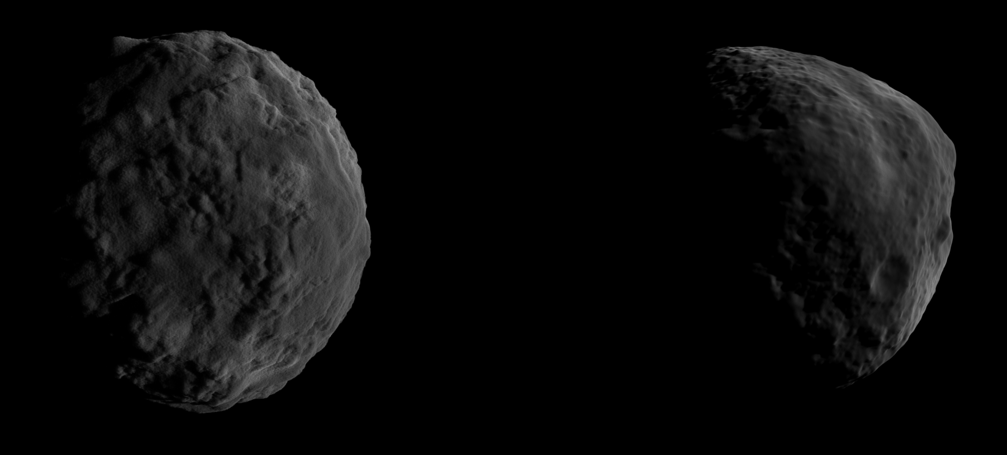Imaging instrument simulations for ESA Hera and Comet Interceptor missions
- 1Department of Physics, University of Helsinki, Finland (antti.i.penttila@helsinki.fi)
- 2VTT Technical Research Centre of Finland
- 3Department of Geosciences and Geography, University of Helsinki, Finland
- 4Department of Electronics and Nanoengineering, Aalto University, Finland
We present recent advances in our Asteroid Imaging Simulator (AIS) toolset [1]. The purpose of the tool is to support the design and operating planning of imaging instruments in space missions. In particular, we aim to support the hyperspectral camera units from VTT Finland in ESA Hera mission (ASPECT camera, Milani CubeSat) and in Comet Interceptor mission (part of MIRMIS instrument).
The tool consists of two main parts. The part generating simulated imagery is based on Blender ray-tracing software [2], and the part converting the images into image data with physical units and simulated instrument noises is written in Python. The Blender part utilizes the internal Python interpreter on Blender and all the tools from the Blender GUI. Our Python module and Blender file enable using shape models as targets, e.g., we have Benny, Ryugu, Itokawa, Didymos-Dimorphos, and 67P/Churyumov–Gerasimenko as possible targets. Additionally, we concentrate on providing typical photometric models for the target surfaces including Lommel-Seeliger, ROLO, McEwen, and Lambert photometric functions that are implemented using Blenders’ shaders. The coordinate and attitude information from SPICE kernels is integrated into our Blender package, as well as scripts for creating circular or elliptical orbits around the target or fly-by scenarios.
The most recent activity is in the coma model to be used with the Comet Interceptor mission. As we aim to simulate and help camera operations, the actual structure of the coma or jet structure etc. is not of main interest to us, whereas the scattering properties of gas and dust in the coma, given some simple model of their density around the nucleus, is. We will present the first evaluation of the gas and dust coma effects on the scattering in the simulated images of a comet nucleus and surrounding environment. We will concentrate on the target scenarios of Comet Interceptor.
Our post-processing Python package handles the conversion of unitless images from Blender into simulated data stream from an imaging unit with physical units and noises. We will first convert the image color (grayscale) space into spectral radiance in W/m2/nm/sr with the knowledge of target albedo, reflectance spectra, and its distance to Sun. Second, knowing the camera and detector specifications, we can convert all the way into charge counts on the CCD pixel with given integration time. Finally, the detector noise profile allows to compute the expected signal-to-noise ratio of the observations, and to simulate the output data stream with noises. This helps in designing integration times and verifying, e.g., reliable detection of features in the retrieved spectrum.

Figure 1: Example of generated images using the shape model of Bennu in two camera positions.
[1] Git project for the Asteroid Imaging Simulator, https://bitbucket.org/planetarysystemresearch/asteroid-image-simulator/
[2] Blender software, https://www.blender.org
How to cite: Penttilä, A., Kolehmainen, M., Halla-aho, N., Jääskeläinen, J., Palos, M. F., Näsilä, A., Cole, R., and Kohout, T.: Imaging instrument simulations for ESA Hera and Comet Interceptor missions, Europlanet Science Congress 2024, Berlin, Germany, 8–13 Sep 2024, EPSC2024-345, https://doi.org/10.5194/epsc2024-345, 2024.